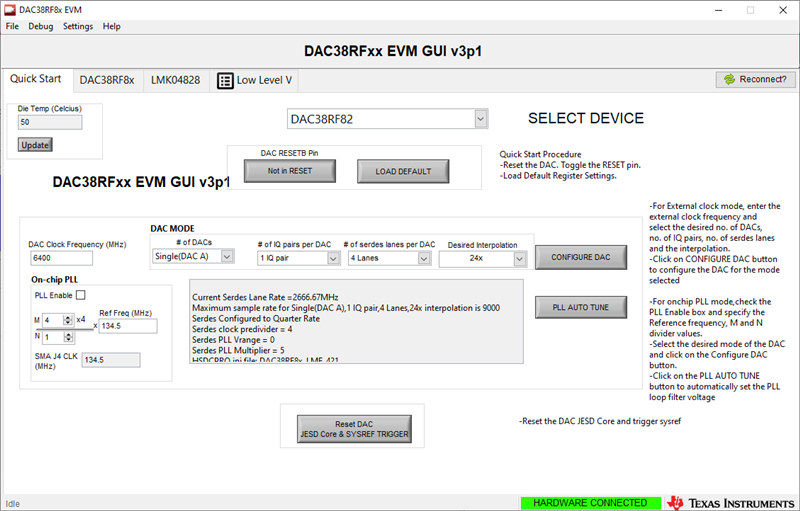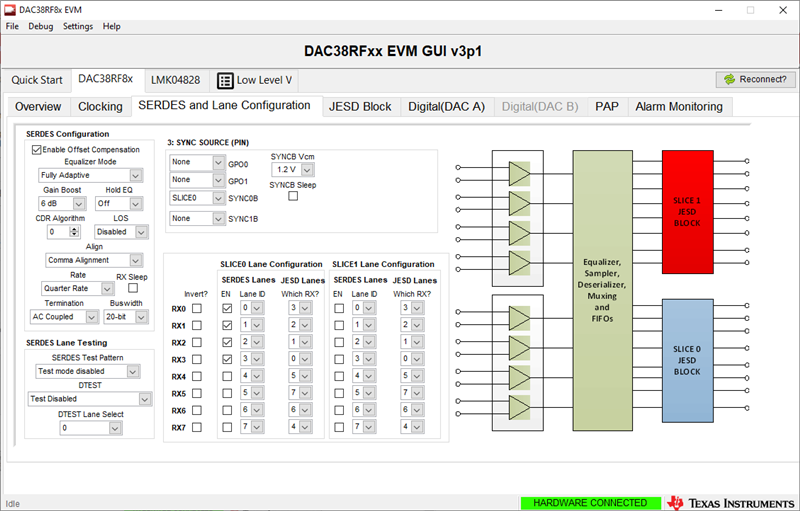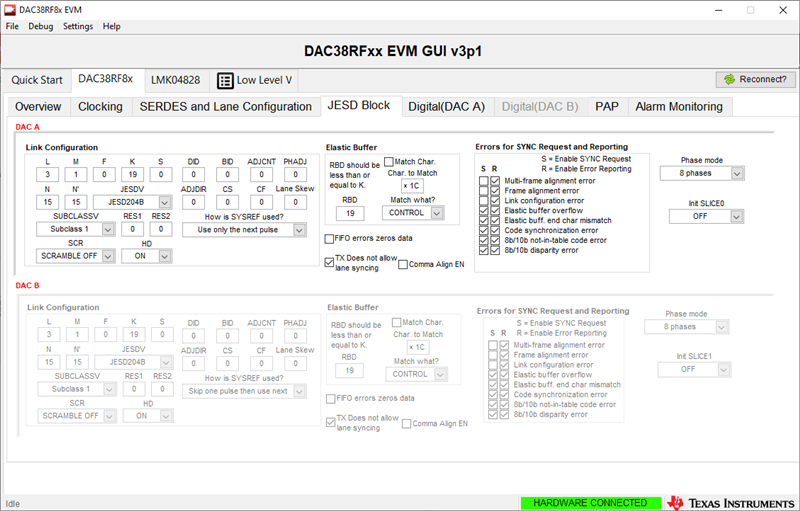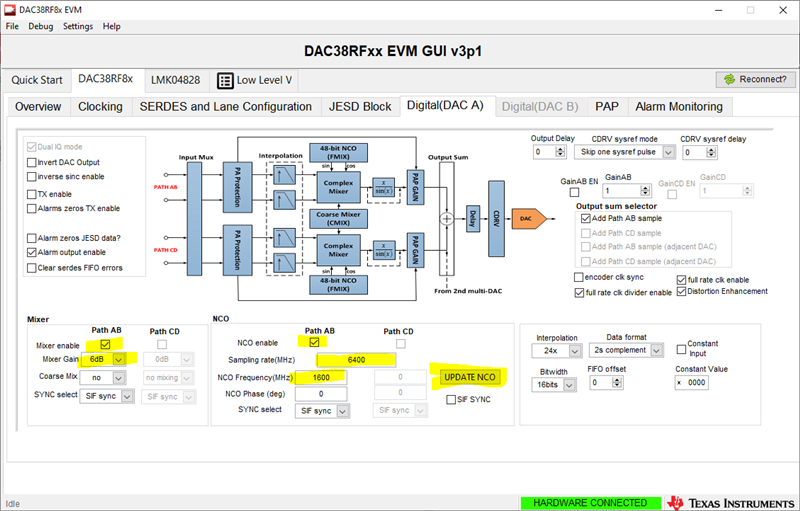Hello,
I would like to confirm a proper configuration for DAC38RF82 for our application.
We need to create a baseband signal (coming from FPGA) of bandwidth between 50-100MHz (Internal data rate will be 100-200MSPS). This is a single I/Q stream.
We need to feed this stream through JESD204 using 22210/44210 mode. We plan to use a Reference clock of 100MHz.
The output frequency should be around 1.6GHz, so we should have a spectrum of 100MHz with a center frequency of 1600MHz. DAC sampling rate selected at 6400MHz.
We use the DUC to upconvert the baseband signal to 1.6GHz, using NCOs.
Please check if the configuration set in the GUI EVM tool matches the desired behavior.
Questions:
1. According to the Datasheet, we need to configure in Dual DAC mode to use the NCO mixers for upconversion. Is this correct or we could use path AB and CD on the same DAC?
2. Do we need to use SYSREF for the Dual DAC configuration in Wide-band configuration?
3. For the JESD204 interface we need to configure each DAC in 22210 mode, correct (not 44210)?
4. Changing the SERDES configuration to a lower rate is not depicted in Quick Start. Is this ok? Will the register setup be updated?
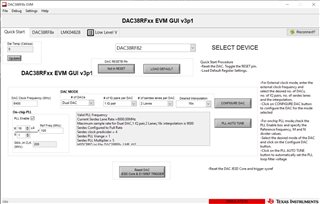
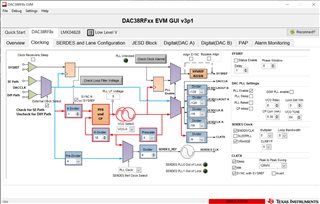
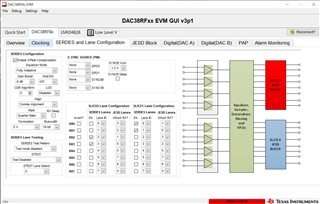
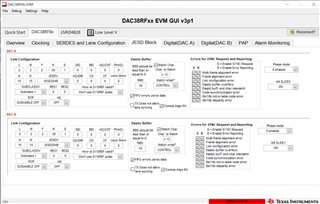
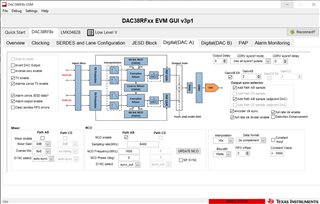
Thanks in advance,
Ilias


